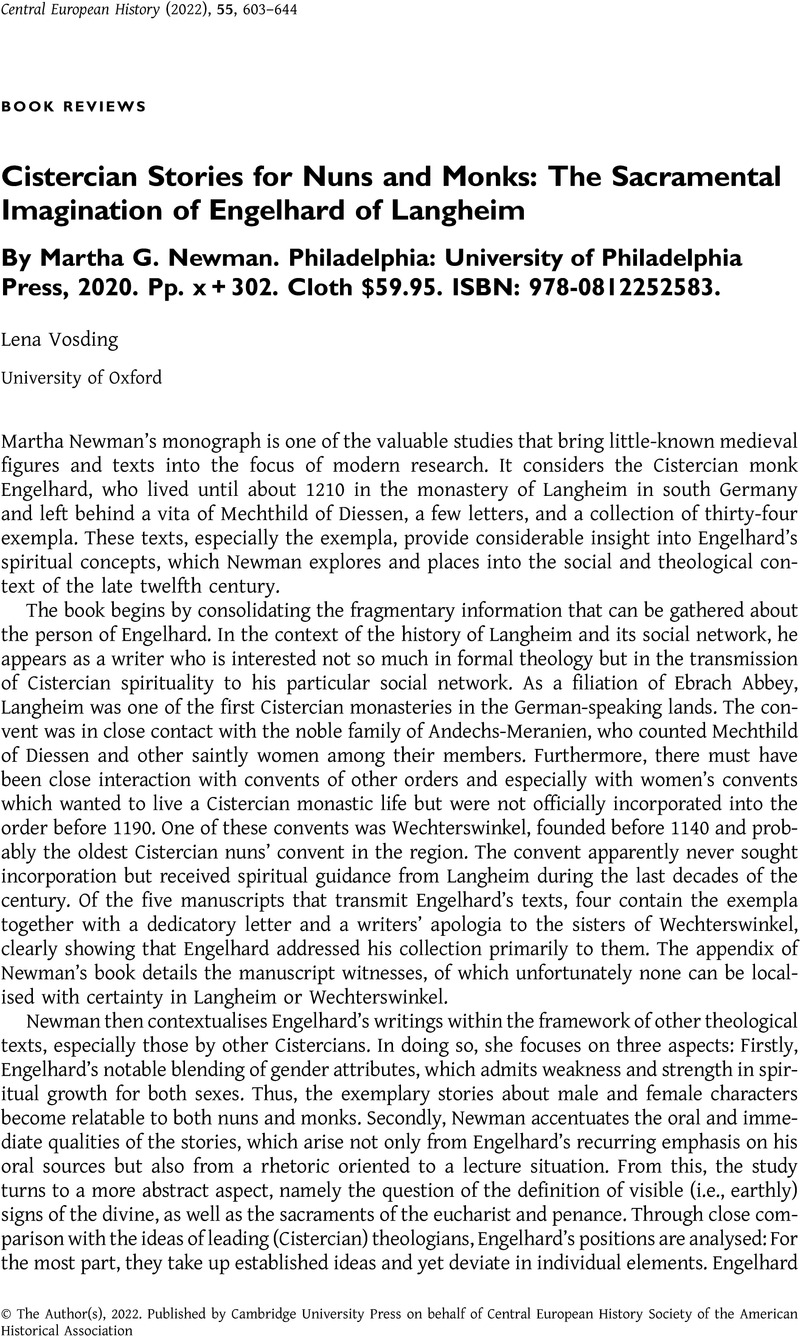No CrossRef data available.
Article contents
Cistercian Stories for Nuns and Monks: The Sacramental Imagination of Engelhard of Langheim By Martha G. Newman. Philadelphia: University of Philadelphia Press, 2020. Pp. x + 302. Cloth $59.95. ISBN: 978-0812252583.
Review products
Cistercian Stories for Nuns and Monks: The Sacramental Imagination of Engelhard of Langheim By Martha G. Newman. Philadelphia: University of Philadelphia Press, 2020. Pp. x + 302. Cloth $59.95. ISBN: 978-0812252583.
Published online by Cambridge University Press: 05 January 2023
Abstract
An abstract is not available for this content so a preview has been provided. Please use the Get access link above for information on how to access this content.

- Type
- Book Review
- Information
- Copyright
- Copyright © The Author(s), 2022. Published by Cambridge University Press on behalf of Central European History Society of the American Historical Association


